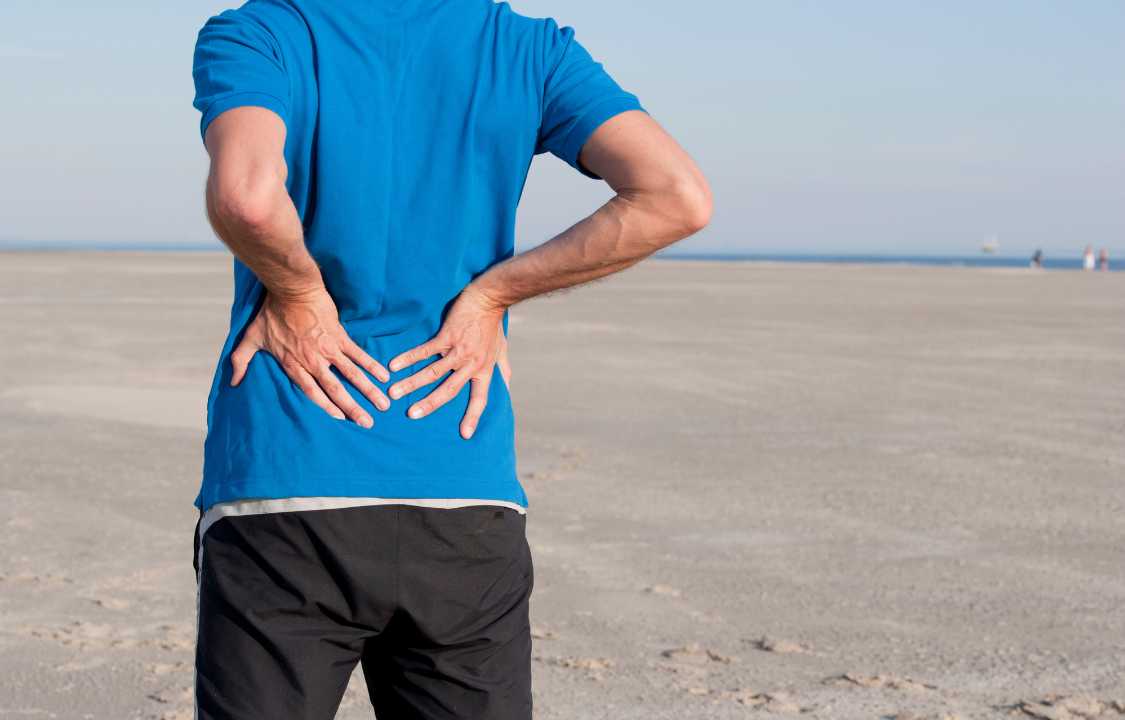Health Care, Insight
Here’s Something Completely Different for Low Back Pain
The approach to back pain has evolved over the years, posing a question that has perplexed generations of patients and doctors. In the early 1980s, during my medical school days, the recommendation for severe back pain often involved bed rest for a week or more, sometimes even requiring hospital admission. However, research emerged, challenging this practice and demonstrating that prolonged bed rest was not beneficial and could be worse than taking it easy for a day or two. The new approach advocated slowly increasing activity, incorporating stretching and strengthening exercises for the back.
Medications, including pain relievers, non-steroidal anti-inflammatory drugs (NSAIDs), and muscle relaxants, were a standard part of the initial treatment for back pain. However, recommendations released in February 2017 prompted a shift in the approach to back pain once again.
Didn’t I hear that NSAIDs don’t work well for back pain?
In 2017, a study concluded that NSAIDs were not highly effective for treating back pain. Subsequently, guidelines released that same year suggested going a step further: it might be preferable to avoid medications altogether, particularly at the onset of back pain.
The American College of Physicians’ 2017 guidelines for treating low back pain, based on a comprehensive review of over 150 studies, revealed that medications typically offer only temporary and modest benefits. Therefore, exploring non-pharmacological interventions is recommended, with the specific approach depending on the type and duration of back pain.
For new low back pain (lasting less than 12 weeks), the guidelines suggest trying:
- Heat
- Massage
- Acupuncture
- Spinal manipulation, such as chiropractic care
If these prove ineffective, NSAIDs or muscle relaxants can be considered, but they are not the first choice due to potential side effects and their modest benefits.
For chronic low back pain (lasting 12 weeks or more), the recommended approaches include:
- Exercise (including stretching, balance improvement, and core muscle strengthening)
- Physical therapy
- Acupuncture
- Mindfulness-based programs for stress reduction
Other techniques like tai chi, yoga, or progressive relaxation may also be beneficial. If these approaches do not provide relief, treatment with NSAIDs, tramadol, or duloxetine can be considered. However, opioids are generally discouraged for chronic low back pain.
It’s essential to note that these recommendations are for cases of low back pain resulting from activities like intense workouts or heavy lifting. They do not apply to serious causes of back pain, such as major injuries, cancer, infection, or fractures (commonly referred to as “red flag” symptoms).
What if the pain continues?
If back pain persists despite non-medication and medication-based treatments, further evaluation may be necessary, including additional tests such as an MRI. It’s crucial to recognize that individual responses to treatments can vary, and what may not work effectively on average could still be beneficial for a specific person. Therefore, ongoing communication with your healthcare provider is essential to tailor the approach to your unique situation.
You could see this coming?
The prevailing understanding for years has been that the majority of low back pain tends to resolve on its own, irrespective of treatment. Consequently, the focus has been on identifying safe interventions that can help alleviate symptoms during the natural course of improvement.
How do I know it’s nothing serious?
Ninety-nine percent or more of individuals with low back pain do not have a serious underlying cause. However, to ensure that your back pain is not attributed to a potentially dangerous condition, doctors employ “red flag” questions:
1. Have you ever been diagnosed with cancer?
2. Have you experienced unexplained or unintentional weight loss?
3. Do you have an abnormal immune system (due to disease or medications)?
4. Do you use intravenous drugs?
5. Have you had a fever recently?
6. Have you experienced a significant injury to your back recently?
7. Have you had bladder or bowel incontinence?
These questions, coupled with a physical examination, are designed to identify factors that may elevate the likelihood of your back pain being linked to infection, tumor, or another serious cause.
So, what?
These guidelines advocate for an approach to treating a common ailment that would have seemed radical just a few years ago. While the recommended remedies are not entirely novel, discouraging the use of medication as an initial step represents a significant departure from prior recommendations. A headline in an email alert following the publication of these guidelines humorously suggested, “Take two yoga classes and call me next month?” – an idea that might not be as far-fetched as it seems.
Medical practices often take time to evolve, and the immediate impact of these guidelines may be limited. However, it wouldn’t be surprising if non-pharmacological treatments for back pain gradually become the norm. Many patients are already seeking out these treatments independently, regardless of medical recommendations. Given that traditional medications for low back pain are often ineffective and can lead to complications, it’s time to recognize and embrace alternative, more effective approaches to address this common issue.

